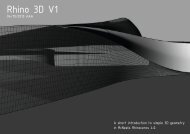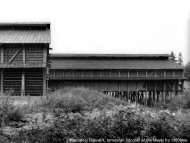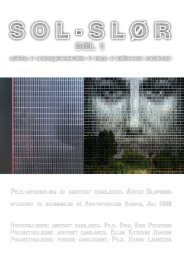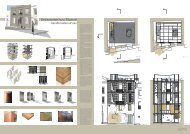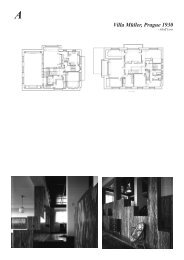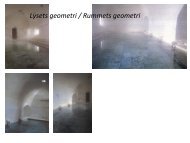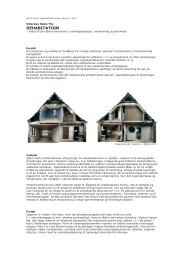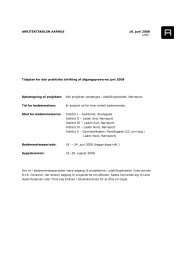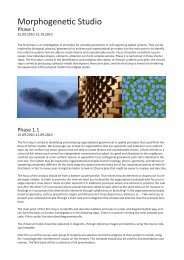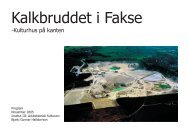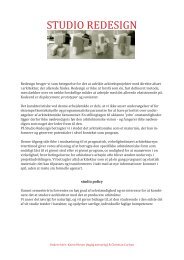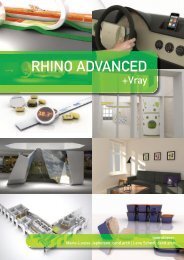BETWEEN SPATIALITY AND THEORETICAL REFLECTION
BETWEEN SPATIALITY AND THEORETICAL REFLECTION
BETWEEN SPATIALITY AND THEORETICAL REFLECTION
You also want an ePaper? Increase the reach of your titles
YUMPU automatically turns print PDFs into web optimized ePapers that Google loves.
10 accessiBility<br />
11<br />
richard herriott<br />
accessiBility in puBlic spaces –<br />
improved way-finding<br />
in Building complexes<br />
Which design factors are important in finding one’s<br />
way around building complexes? Which design<br />
elements and what information do people rely on<br />
in their movements? And what does the organisation<br />
of space mean for people’s ability to find their<br />
bearings in a building? And are there parallels<br />
between orientating oneself in cities and in building<br />
complexes?<br />
The project focuses on hospitals, but it will to a<br />
great extent be possible to transfer the acquired<br />
knowledge to other building types and use it in<br />
practice in future planning and projecting.<br />
Solvej Sebber colfelt<br />
PhD fellow, Ma (architecture)<br />
Department of architecture<br />
e: solvej.colfelt@aarch.dk<br />
accessiBility through<br />
user-centred design and<br />
inclusive design processes<br />
In more areas of product and service design, it has<br />
become increasingly necessary to accommodate<br />
users with a much wider variety of needs and<br />
capabilities. Specifically, this means designing for<br />
an aging population and taking greater care over<br />
the needs of disabled citizens.<br />
However, design solutions typically focus on single,<br />
optimal solutions when perhaps it might be preferable<br />
to devise a suite of design solutions and allow<br />
users to choose which is the most appropriate to<br />
their needs. Choice implies greater complexity<br />
which outcome may run counter to the objectives<br />
of inclusive design. A design pathway is required to<br />
navigate the choices faced by designers and clients<br />
during the development of products or services.<br />
Additionally, and of equal importance, is that an<br />
inclusive design process requires that the users´<br />
needs must be an integral element.<br />
A subsidiary element to the project is to construct<br />
a theoretical linkage between the aims of Inclusive<br />
Design and general design-process theory. Resulting<br />
from this will be a clearer outline of Industrial<br />
Designs conceptual strengths and weaknesses.<br />
richard herriott<br />
PhD-fellow, Ma (architecture)<br />
Department of Design<br />
e: richard.herriott@aarch.dk



